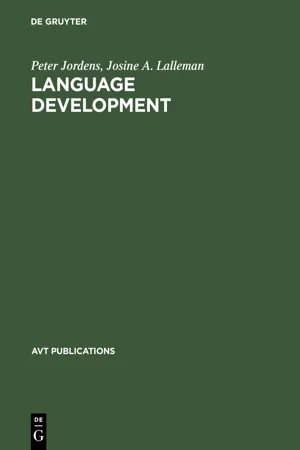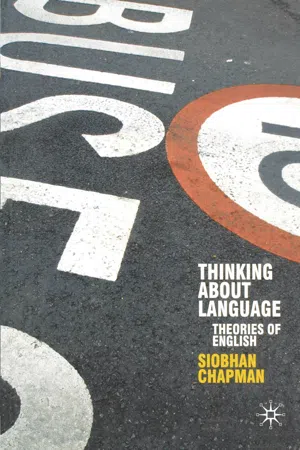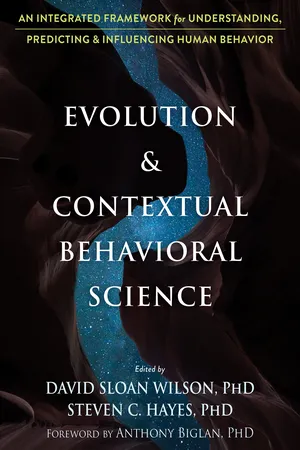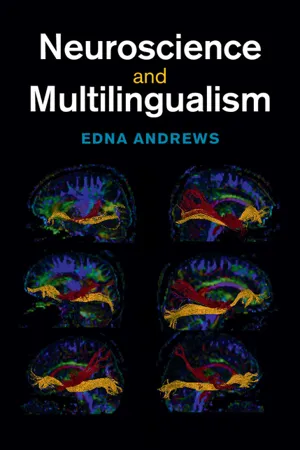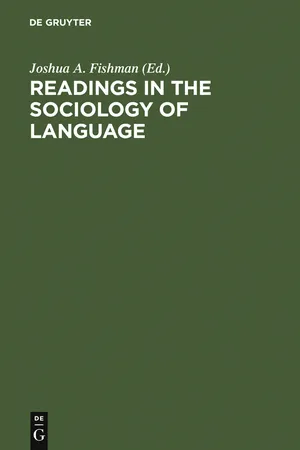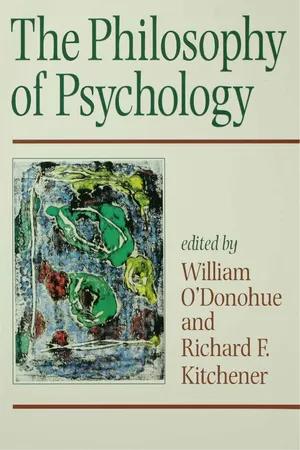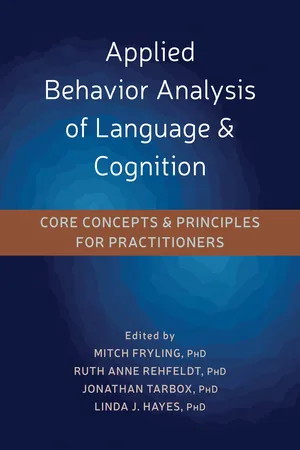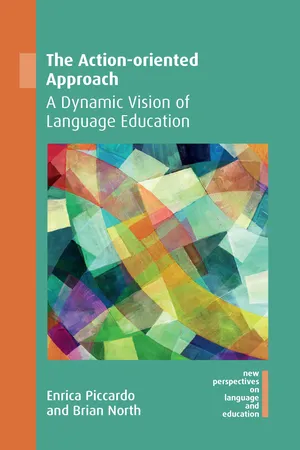Languages & Linguistics
Behavioral Theory
Behavioral theory in linguistics focuses on the idea that language is learned through imitation, reinforcement, and conditioning. It emphasizes observable behaviors and the role of the environment in shaping language acquisition. This theory suggests that language development is influenced by external factors and interactions, rather than solely by internal cognitive processes.
Written by Perlego with AI-assistance
Related key terms
1 of 5
12 Key excerpts on "Behavioral Theory"
- eBook - ePub
Understanding English Language Teaching in EFL Context
From Idea to Practicality
- Kamal Ud Din(Author)
- 2023(Publication Date)
- Routledge India(Publisher)
It would be helpful to reflect on a question first. Where do the general learning theories stand, when seen from a language teaching context? Language learning cannot be clearly distinguished from any other learning; thus, the three major theories of learning, such as behaviorism, cognitivism, and constructivism, all can be useful perspectives for language teachers, though they are associated with learning in a general sense. These theories will be discussed only briefly because the whole curriculum of teacher education contains a lot concerning those theories, especially in the course of Educational Psychology, Philosophy, and Curriculum.3.1 Behaviorism in Language Learning Context
The behaviorist defines learning as the change in behavior. The behavior to the behaviorist is an observable act. The behaviorists’ “publically observable behavior,” was defined by Brown (2006 ) as the behavior that can be “objectively measured” (p. 21), while the change refers to a relatively permanent change as defined by Kimble (1961 ), which results from practice and experience.A temporary or recurring state or the change in physical states such as headache is not learning. A behavior in language learning context includes verbal behavior in terms of expressing an idea or a sentence orally or in writing or any other language form.In the context of language learning, for example, a behaviorist would explain when a child cannot say how are you? Then, as a result of imitation from adults, practice, and repetition and with support of positive reinforcement, he or she can say how are you? This is a change in behavior (language behavior—from not being able to say to being able to say is the change and thus indicates the occurrence of learning.If one, somehow, agrees with the existing definition of learning from a behavior-change perspective, the re-enforcement principle can be a useful concept for learning, especially in a language context also. According to Olson and Hergenhahn (2016 ), the reinforcement is a natural/unconditioned stimulus. Unconditioned stimulus means a natural stimulus causing a natural response; for example, food is a natural stimulus and a dog salivating is a natural/unconditioned response (McLeod, 2019 ). Between the two, a third and an artificial conditioning called instrument conditioning can be introduced, which is supposed to draw the same response as did the natural stimulus, as indicated in many of the behaviorist experiments as that of Pavlov (the dog salivated at the bell; previously food was given soon after the bell). The bell as a condition did the same as the food to the salivating behavior of the dog. If you ring the bell but don’t give food (negative re-enforcement), the behavior to salivate will diminish, and if the food is continuously provided soon after the bell, then the behavior of salivating will enhance (positive re-enforcement). Hence, for the ‘behavior,’ ‘to be or not to be’ depends on the conditioning, which mostly occurs as a result of interaction with the environment. To me, it seems inappropriate to say (as Olson & Hergenhahn, 2016 - eBook - PDF
- Peter Jordens, Josine A. Lalleman(Authors)
- 2016(Publication Date)
- De Gruyter Mouton(Publisher)
3.1. Behaviorist Theory Behaviorist theory essentially claims that all human behaviour is acquired by means of learning either from previous experience or from the organism's environment. According to Skinner (1957), behaviour can be explained by consideration of the conditions of external stimulation without reference to intervening processes. In his view, language is acquired through the principles of operant conditioning: a child utters a sentence (the operant), and this results in an action, reaction, or verbal answer from his environment, which reinforces the operant. Language is thus assumed to be learned through imitation of the child and reinforcement by the adult. It was hypothezised that the imitations of children became more complex over time. However, studies of imitation (Ervin-Tripp 1964, Bloom, Hood & Lightbrown 1974) showed that children only imitated structures that also appeared spontaneously in their speech, and that the structure of the imitations was not more complex than spontaneous speech. These findings weakened the claims of behaviorist theory. Reinforcement by the environment is an important mechanism through which, according to behaviorist theory, a child learns to speak and comprehend language. According to this hypothesis, children are thought to learn language by being encouraged when they utter a correct struture and by being discouraged when they utter an incorrect one. Although Brown & Hanlon (1970) found that children do not receive negative feedback from their parents when they utter an ungrammatical sentence, Snow (1986) argues that any response that reflects a need to negotiate about the exact meaning of what the child says should be viewed as negative feedback. Parents thus do reinforce, but generally not in the way in which is was claimed by behaviorists, by correcting ungrammaticalities. Behaviorist theory was severely criticized by Chomsky (1959), and in recent years its - eBook - ePub
- Kirsten Malmkjaer(Author)
- 2009(Publication Date)
- Routledge(Publisher)
BBehaviourist linguistics
The psychological theory known as behaviourism was founded by J.B. Watson (1924). Its main tenet is that all of what some people refer to as mental activity (including language use) can be explained in terms of habit formation, or patterns of stimulus and response, built up through conditioning. These patterns of behaviour are an organism’s output; the conditioning through which they have been formed are the input to the organism. Both the input and the output to the organism are observable phenomena, so behaviourism was well suited to the strong current of empiricism that swept the scientific communities in the USA and Britain early in the twentieth century.In linguistics, one of the finest examples of the empiricist/behaviourist tradition is Leonard Bloomfield’s Language (1933/1935), although the most rigorous application of behaviourist theory to the study of language is probably Verbal Behavior (1957), by Burrhus Frederic Skinner, one of the most famous behaviourist psychologists of the twentieth century. This book was severely criticised by Chomsky (1959).In Language, Bloomfield insists that a scientific theory of language must reject all data that are not directly observable or physically measurable. A scientific theory should be able to make predictions, but Bloomfield points out that (1935: 33):We could foretell a person’s actions (for instance, whether a certain stimulus will lead him to speak, and, if so, the exact words he will utter) only if we knew the exact structure of his body at that moment, or, what comes to the same thing, if we knew the exact make-up of his organism at some early stage – say at birth or before – and then had a record of every change in that organism, including every stimulus that had ever affected the organism.Language, according to Bloomfield, is a substitute for action. He presents a story about Jack and Jill (1935: 22–7), in which the sensations of the characters are provided with ‘translations’ into behaviourist parlance: Jill is hungry (‘that is, some of her muscles were contracting, and some fluids were being secreted, especially in her stomach’), and she asks Jack to fetch her an apple which she sees (‘the light waves reflected from the red apple struck her eyes’) on a tree, and so on. - eBook - PDF
Thinking About Language
Theories of English
- Siobhan Chapman(Author)
- 2017(Publication Date)
- Red Globe Press(Publisher)
This is why our consideration of behaviourism is crucial to understanding present-day thinking about language, and is not of marginal or merely historical interest. One current approach to language that rules out any notion of meaning independent of use is the school of thought known as integrational linguis-tics. Integrational linguists would not necessarily describe themselves as behaviourists, and indeed some of them have been overtly critical of work by previous thinkers such as Bloomfield and Quine. The term integrational is often defined in opposition to segregational, which is a label these linguists use to describe much of the history of thought about language. Segregational linguists rely on the assumption that language has some form of independent existence: that it can be isolated or segregated from any individual context or situation and studied in its own right. Integrational linguist Roy Harris sum-marises the difference as follows: The alternative approach, the integrational approach, sees language as manifested in a complex of human abilities and activities that are all integrated in social interaction, often intricately so and in such a manner that it makes little sense to segregate the linguistic from the non-linguistic components (Harris, 1998, p. 6). So integrationists insist on seeing people’s behaviour as a whole. It is a futile activity to try to separate out aspects of a piece of human interaction and say ‘This is linguistic’ and ‘This is non-linguistic’. Language is no more and no less than the set of behaviours and abilities to behave that can be observed in any human society. Integrationalism rules out the reductive move of isolating INTRODUCING LANGUAGE THEORY 36 some aspect of that set as the proper focus of study in linguistics. The study of language – that is, the study of communication – must include the study of contexts in which it takes place, the triggers that cause it to occur and the effects it has within the society. - eBook - PDF
- Hayes, Steven C., Wilson, David Sloan(Authors)
- 2018(Publication Date)
- Context Press(Publisher)
The current chapter aims to provide an Evolution & Contextual Behavioral Science 56 overview of the behavior-analytic approach to human symbolic thought and com- munication, and its evolution, as viewed predominantly through the lens of RFT. Verbal Behavior In his 1957 book Verbal Behavior , Skinner defined language as any behavior by a speaker that is reinforced through the mediation of a listener, which in turn gives rise to multiple classes of verbal behavior. These classes included mands, echoics, textuals, transcription, dictation, intraverbals, tacts, extended tacts, and autoclit- ics. While these concepts have been used extensively in remedial education pro- grams (e.g., Lovaas, 1981), Skinner’s text did not generate a vibrant and productive program of basic research on human language per se. One likely reason for this is that many of the verbal operants he defined could be studied in the nonhuman laboratory. For example, when a rat learned to press a lever for food in an operant chamber, the lever press could be considered a type of mand, if the lever press was reinforced by an individual who was trained by a verbal community to do so (Hayes, Blackledge, & Barnes-Holmes, 2001). Given this conceptual view, there was little motivation for behavioral researchers to study language in the human animal. This motivation would only emerge when key differences between human and nonhuman behavior were identified. While the influence of Skinner’s operant analysis of verbal behavior remained limited, even in behavioral psychology, some behavioral psychologists, including Skinner, did pursue broader features of human language. In the early years, this was focused on so-called instructional control or rule-following. Rules were first defined by Skinner (1969) as contingency-specifying stimuli. That is, “we tend to follow rules because previous behavior in response to similar verbal stimuli has been reinforced” (p. 148). - eBook - PDF
- Edna Andrews(Author)
- 2014(Publication Date)
- Cambridge University Press(Publisher)
2 Building the basis: linguistic contributions to a theory of language and their relevance to the study of language and brain Linguistics has a double object: it is the science of language and the science of languages. (E ´ mile Benveniste) One of the ongoing issues in research devoted to language and brain is the need for a more significant incorporation of linguistic theory. Poeppel (2004, 2005, 2008) has been one of the more eloquent researchers to discuss this problem. In this chapter I take up this issue and present a set of important contributions from theoretical linguistics, cognitive linguistics, cognitive anthropology, semiotics, sociolinguistic theory, and second language acquisition theory that are central to a robust research agenda in the field of language and brain. In particular, I will analyze the essential principles of human language that are critical to the development and implementation of ecologically valid research paradigms in the study of brain and language, since many of the central notions of the discipline of linguistics have not been fully articulated and explored in neurolinguistic and imaging studies of language. 1 2.1 The foundation of a theory of language and brain: understanding speech acts In order to build a theoretical foundation for understanding human language, there are fundamental properties inherent in all human languages that must be explicated from the very beginning. One way to introduce these concepts is via an attempt at a working definition of language. I propose the following definition of language and languages as a starting point for this analysis: A learned, dynamic, hierarchical, relatively autonomous system of meaning- generating paradigmatic and syntagmatic signs that signify and communicate to self and others via speech communities and communities of practice throughout the life cycle. Several important ideas are articulated in the above definition. - eBook - PDF
- Joshua A. Fishman(Author)
- 2012(Publication Date)
- De Gruyter Mouton(Publisher)
Floyd G. Lounsbury LINGUISTICS AND PSYCHOLOGY THE FIELD OF LINGUISTICS The linguistics of today has developed in a rather remarkable isolation from the psychological disciplines. Influences from psychology have been indirect, coming through the general intellectual climate of the recent decades - to which behaviorist psychology has contributed its share - rather than by direct contact. It is not our task here to account for this, but rather to sketch some areas of central concern in linguistics which may be considered as potential areas for psychological explo-ration. First we should note some of the commonly accepted limita-tions on the scope of the discipline. Linguistics is concerned with the structure of the verbal response. Only within relatively narrow limits is it concerned with the stimulus conditions under which a verbal response is produced or with the na-ture of the stimulus-response connection and its establishment in the individual. It is primarily descriptive and formulative, rather than in-terpretive. In this, it is akin to certain behaviorist schools of experi-mental psychology. In the former respect, however, its goals are rather different from those of psychology. It is concerned with verbal responses only up to a certain level of complexity. Levels of complexity or structural integration in the verbal response are of at least two sorts: phonological and grammatical. The former include the distinctive phonetic feature, the phoneme, the syl-lable, one or more orders of stress groups, one or more kinds of pause groups, and several internationally defined groups. The latter include the distinctive morphemic feature, the morpheme, and several inter- Linguistics and Psychology 39 mediate levels of morphological and syntactic structures, on up to the sentence in its various types. - eBook - PDF
- William O′Donohue, Richard F Kitchener, Richard F Kitchener, William O′Donohue(Authors)
- 1996(Publication Date)
- SAGE Publications Ltd(Publisher)
CHAPTER 9 L I NGUI STIC BEHAVIORI SM AS A PH I LOSOPHY OF EMPI R ICAL SCI ENCE U l l in T. Place INTRODUCTION B. F. Skinner (1969; 1 974) used to maintain that his radical behaviorism is a philosophy of science. It is a philosophy of science, however, which is restricted in its application to the science of psy-chology conceived as the empirical and experi-mental study of the behavior of living organisms. I shall argue in this chapter that what I call 'lin-guistic behaviorism' is a philosophy of science that has application to every empirical science from physics to sociology. This claim rests on three premises: I . Philosophy is the scientific study of the relation between language and the environmental reality it represents-the metaphilosophical thesis. 2. Science is the systematic attempt to increase the scope, generality, accuracy, and objectivity of linguistic representations of environmental reality-the metascientific thesis. 3. Language is a form of human social behavior which for scientif ic purposes needs to be stud-ied and explained with the same methods and 1 26 principles as are used in studying and explain-ing the other aspects of the instrumental (oper-ant) behavior of free-moving living organisms (animals)-the metalinguistic thesis. Differences from Other Philosophies of Science Linguistic behaviorism differs from other app-roaches to the philosophy of science in maintaining • that the philosophy of science is a linguistic enquiry, an investigation of scientific language using the technique known as 'conceptual analy-sis', and • that conceptual analysis and hence, the philoso-phy of science, considered as the application of conceptual analysis to scientific language, is an empirical sociolinguistic investigation of the norms or conventions governing the construction of intelligible sentences in natural language (Place, 1 992b). - eBook - PDF
- Julieta Arjona Sumague(Author)
- 2019(Publication Date)
- Society Publishing(Publisher)
The tutors can also support the students in attaining the knowledge of how to distinguish or categorize the vowel as well as consonant and how to make a sound which is precise with the accurate position of the tongue. Only have a good master of phonetics can teach the students to learn word pronunciation in a well manner. In this way, the language teachers must accept the analysis of speech sounds of phonetician and the International Phonetic Alphabet for pronunciation training. Linguistic Theory and Language Teaching 79 Figure 4.2: Linguistics Guides Language Teaching or Language Pedagogy. Source: https://live.staticflickr.com/4893/31268958297_7f296149bf_b.jpg By the time period of around 1960, the impact of the structural linguistics on the language teaching had reached a top in the regions of United States. Structural linguistics strained the significance of the language as a system and examines the place that linguistic units, for example, sounds, words, sentences have within this system. In connection with the behaviorism it offered the major theoretical basis of the audio-lingual theory and in this way impacts the language teaching materials, methods as well as the teacher education. Behaviorism take into the direction towards the theories of language teaching and learning which described how an external event (or a stimulus) can produced a shift or modification in the behavior of an individual (a response) without any type of mental behavior. Even though the Behaviorism abandoned the mental activity , it pressurized the significance of the practice and repetition in language learning, which in the point of view of researcher named as Bloomfield; it is a very important aspect in the learning a foreign language. Let’s take the audiolingual technique as an instance. - Hayes, Linda J., Tarbox, Jonathan, Rehfeldt, Ruth Anne, Fryling, Mitch J(Authors)
- 2020(Publication Date)
- Context Press(Publisher)
CHAPTER 7 Human Behavior Is Referential Behavior Emilio Ribes-Iñesta University of Veracruz Link and Preview The previous chapter provided an overview of both referential behavior and symbolic behavior, and in particular described the clinical implications of work in this area. The current chapter continues with the very general topic of referential behavior but addresses the topic of language in science more generally. This includes a discussion of terms within psychology and applied behavior analysis specifically. This chapter will be of particular interest to those who are interested in delving further into theoretical issues pertaining to the topic of language in science. “Language” and “behavior” are not technical terms, although they may be used techni- cally for given purposes. This is one of the reasons why confusion often arises in psychol- ogy. Indeed, when people talk about “psychological” terms, they often think they are talking about the same things because they are using the same words, but this is often not the case. Words in ordinary language are multisensical; that is, they are used in dif- ferent senses in different situations and contexts. Ryle (1949; 1962) pointed out that oftentimes people suppose that they are sustaining a dialogue about a common issue when, actually, two simultaneous monologues about different issues are taking place. In ordinary language words do not have a specific and constant referent or correspondence with things. However, in technical languages some words have specific uses regarding only some things. Clearly that is an important distinction between ordinary language and the technical language of the sciences. “Language” and “behavior” are also not univocal terms, even in the scientific domains of linguistics and psychology. I will try to delimit the ways in which these terms will be used from now on. “Language,” as a term, always has to do, directly or indirectly, with the social practice of human beings.- eBook - ePub
The Action-oriented Approach
A Dynamic Vision of Language Education
- Enrica Piccardo, Brian North(Authors)
- 2019(Publication Date)
- Multilingual Matters(Publisher)
Bildung’: the study of the language as an object alongside the study of classical literature was considered essential to a well-rounded education and the main springboard for the cultural and intellectual development of the individual. Aristocrats also supplemented their learning of foreign languages, with fencing, dancing, and playing a musical instrument, all mainly through imitation and practice with their preceptor (= personal tutor).General theories of learning have been developed from the 17th century onwards by educational philosophers like Comenius, Locke, Hume and Rousseau. However, neither the practice of learning languages through the translation of the classics followed by rote memorisation of vocabulary and grammar rules, nor the tradition of conversation with a native speaker tutor, was based upon any theory of language learning in the modern sense of the word (Richards & Rodgers, 1986). Learning a language was considered as a way of ‘shaping the mind’ of the learner, fostering reasoning through the study and use of morphology and syntax, and as a tool for developing rhetorical skills by studying classical models.So the appearance in the 1930s of a theory that viewed language learning as stimulus, association, repetition (Skinner, 1938, 1957), based on Ivan Pavlov’s theory of conditioning (stimulus-responsereinforcement) was welcomed as a sound, scientifically-based approach. In behaviourism, learning is seen as an unconscious, automatic process that happens through exposure, reaction to a prompt and repetition. Explanation is considered less useful if not counterproductive. An efficient programmed learning system will present all relevant learners with the subject matter in bite-sized chunks in a logical order for repetitive practice. Technology is used where possible as a presentation aid in order to create a ‘feedback loop’ for further practice on mistakes – usually without any explanation.One reason behaviourism became pervasive in the 1960s was the development of the related ‘behavioural objectives’ approach (Mager, 1962); the operationalisation of the two concepts became completely intertwined in ‘mastery learning’ (Bloom, 1968). Bloom’s famous taxonomy (Bloom & Krathwohl, 1956) was related to this effort to systematise subject knowledge and to break it down logically into elements that could be presented discretely as objectives for presentation, practice and assessment of mastery. Usually assessment happened through multiple-choice test batteries, but the search for objectification also led to an avoidance of any judgement in marking by hiding behind arithmetic (Stern, 1992). - eBook - ePub
Cognitive Psychology and Information Processing
An Introduction
- R. Lachman, J. L. Lachman, E. C. Butterfield(Authors)
- 2015(Publication Date)
- Psychology Press(Publisher)
Chomsky was influenced by both behaviorism and information theory. His program of studies included information theory as well as linguistics, which at the time was influenced by behaviorism. Thus, he understood both behavioristic and information theory accounts of language, and he rejected both. After briefly reviewing both earlier approaches to language, we examine what he put in their place and why.II. Neobehavioristic and Information-Theory Approaches to Language
One of the most remarkable aspects of the first 60 or 70 years of American experimental psychology is how little concern it gave to language. Pavlov, who discovered the conditioned reflex, thought that the principles of conditioning would help explain how language is used (Pavlov, 1927), and there was some Russian experimentation toward that end (e.g., Volkova, 1953). But language fell largely in the cracks between the subdisciplines of American psychology. Gestalt psychologists studied perceptual and memory organization. Verbal-learning psychologists studied rote acquisition, and from their viewpoint, natural language habits were sources of contamination to be eliminated from their experiments. Neobehaviorists viewed language as a complex configuration of the simple processes they studied in the animal laboratory, and, before 1950, accounting for language seemed to them a job for the future.A. Neobehaviorist Accounts
By the mid-1950s, the neobehaviorist paradigm was relatively complete, optimism ran high, and conditioning theory seemed ready for extension to new problems. It seemed that the time had come when tasks previously left for the future might be profitably addressed. Here, we provide only a few examples to give the flavor of the neobehaviorists' extensions of their theories to language. Staats and Staats (1963) provide a superb and much longer account of the various aspects of language that were addressed from a neobehavioristic point of view, including speech development, semantic differentiation of word meanings, acquisition of word meanings, and word associations, grammar, and communication, among other things.1. Classical Conditioning
Osgood (1953) provided one account of how word meanings might be learned by classical conditioning which was extended by Staats and Staats (1963). Consider a baby crawling toward the television and reaching for the dial. Mother slaps the baby's hand, forcefully saying, "No." By Osgood's account, the slap is an Unconditioned Stimulus (UCS), and the word NO is a Conditioned Stimulus (CS). Hand-withdrawal by the baby is an Unconditioned Response, (UCR), which eventually becomes a Conditioned Response (CR) through classical conditioning. Thus, after several repetitions of the approach-withdrawal sequence, it will suffice for the mother to say "No." She will not need to slap the child's hand at the same time, because hand-withdrawal will be elicited by the word alone, just as a dog eventually salivates (CR) to a bell (CS) without food (UCS).
Index pages curate the most relevant extracts from our library of academic textbooks. They’ve been created using an in-house natural language model (NLM), each adding context and meaning to key research topics.

